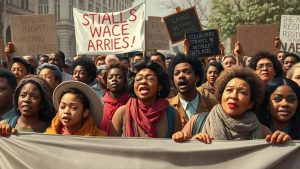Supreme Court decisions shaping our rights today
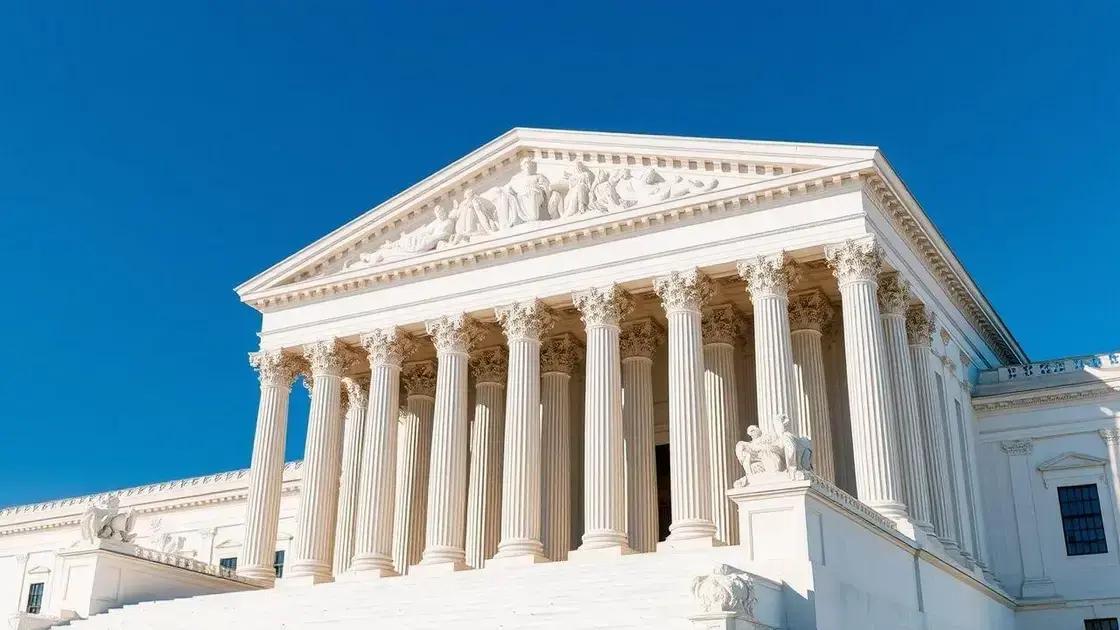
Anúncios
Supreme Court decisions profoundly influence state laws and public rights by interpreting legal issues, often reflecting or shaping public opinion and societal values.
When we talk about Supreme Court decisions, it’s fascinating to see how they influence our everyday lives. These rulings not only create legal precedents but also shape societal norms. Let’s dive into some pivotal decisions that have defined our rights.
Understanding the role of the Supreme Court
The Supreme Court plays a crucial role in interpreting the law and shaping our legal rights. This important body makes final decisions that affect individuals and the nation as a whole. Understanding its role can help us grasp how laws are applied and adjusted over time.
Anúncios
The Structure of the Supreme Court
The Supreme Court consists of nine justices who are appointed for life. Each justice brings their perspectives and experiences to the bench. This diversity is essential for a fair judicial process.
- Chief Justice leads the Court and maintains order.
- Associate Justices participate in case decisions and discussions.
- Each justice reviews cases thoroughly before making rulings.
Beyond their individual responsibilities, justices gather to deliberate on important issues that impact law and society. Their decisions can overturn previous rulings, establishing new legal standards.
How the Supreme Court Decides Cases
The Supreme Court receives cases through appeals. Only a small percentage are selected, typically those with significant constitutional questions or legal principles at stake. This selective process ensures that the most impactful cases receive attention.
Anúncios
Once a case is on the docket, the justices engage in hearings where both sides present arguments. Afterward, several discussions occur, and justices cast votes. A majority vote determines the outcome, leading to a binding ruling.
Each decision includes a written opinion that explains the justices’ reasoning. These opinions serve as precedents for future cases, guiding lower courts and influencing laws across the country.
Key historical Supreme Court decisions
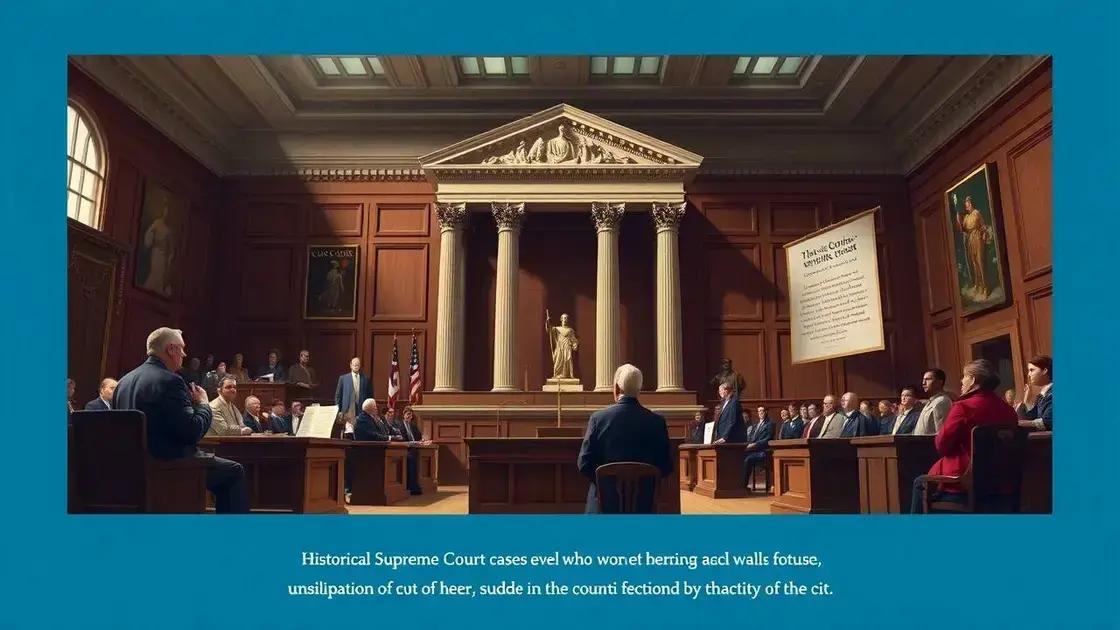
Throughout history, important Supreme Court decisions have shaped the legal landscape in the United States. These rulings often have lasting impacts on our rights and freedoms. Examining a few key decisions helps us understand the Court’s influence on society.
Brown v. Board of Education (1954)
This landmark case declared that state laws establishing racial segregation in public schools were unconstitutional. It overturned the previous ruling in Plessy v. Ferguson, which upheld “separate but equal” laws. The Brown decision was crucial for the Civil Rights Movement, setting a precedent that fought against racial discrimination.
- Highlighted the need for equal educational opportunities.
- Raised awareness about racial injustice.
- Encouraged further challenges to segregation laws.
Another significant ruling is Roe v. Wade (1973), which recognized a woman’s right to choose an abortion. The Court held that a woman’s right to privacy extended to her decision concerning childbirth. This decision sparked ongoing debates about reproductive rights that continue today.
Miranda v. Arizona (1966)
The Miranda case established essential protections for individuals in police custody. It ensured that suspects are informed of their rights to an attorney and against self-incrimination before being interrogated. This decision emphasized the importance of fair legal procedures.
Understanding these decisions helps us appreciate the ongoing evolution of the law. Each ruling not only addresses specific issues but also sets foundations for future cases. The implications of earlier decisions continue to echo in current legal matters, reinforcing the relevance of the Supreme Court in shaping our society.
Recent Supreme Court decisions and their impact
Recent Supreme Court decisions have continued to influence various aspects of American life. Each ruling reflects evolving societal values and legal interpretations, impacting everything from civil rights to individual freedoms.
Whole Woman’s Health v. Hellerstedt (2016)
This pivotal case challenged Texas state laws that imposed restrictions on abortion providers. The Court ruled that these regulations placed an unconstitutional burden on women seeking abortions. This decision reinforced the importance of access to healthcare services and set a standard against similar laws in other states.
- Affirmed the necessity of safe and accessible abortion services.
- Prevented harsher restrictions on reproductive rights.
- Encouraged discussions on women’s health care accessibility.
Another significant case is Masterpiece Cakeshop v. Colorado Civil Rights Commission (2018). This ruling involved a baker who refused to create a wedding cake for a same-sex couple. The Court’s decision emphasized the balance between religious freedom and anti-discrimination laws, stirring debate about the rights of businesses versus individual liberties.
Bostock v. Clayton County (2020)
In the Bostock case, the Supreme Court ruled that federal anti-discrimination laws protect employees from being fired due to their sexual orientation or gender identity. This groundbreaking decision expanded protections for LGBTQ+ individuals and highlighted the ongoing fight for equality in the workplace.
These rulings demonstrate how recent Supreme Court decisions shape the legal framework around crucial societal issues. By analyzing their implications, we gain a clearer understanding of how laws adapt to meet contemporary challenges and reflect the values of society.
How Supreme Court decisions affect state laws
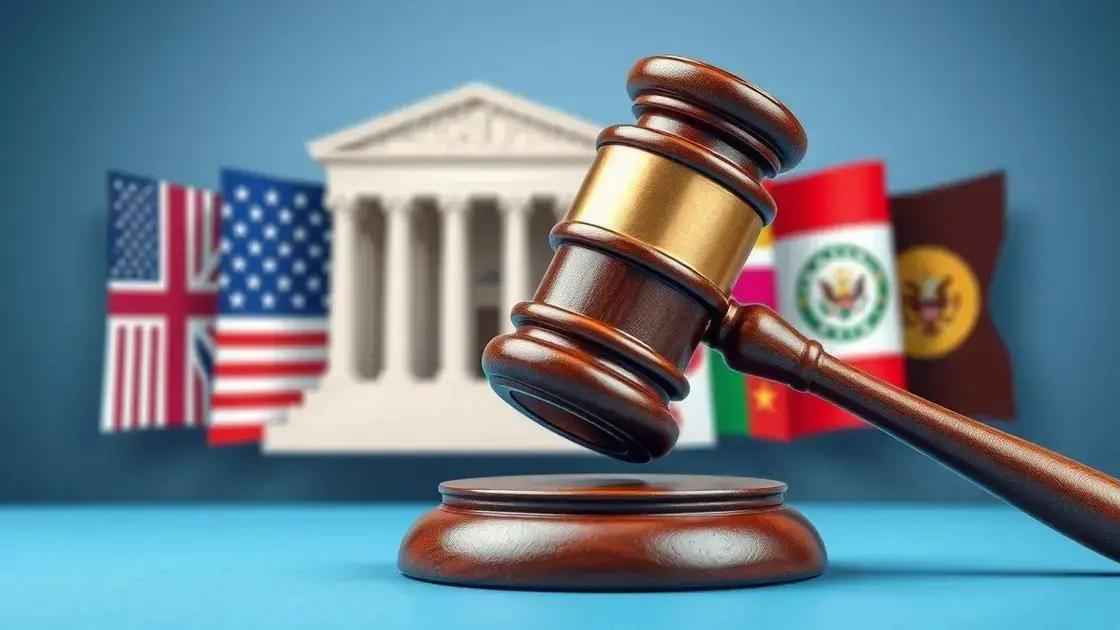
Supreme Court decisions have a profound influence on state laws across the United States. When the highest court makes a ruling, it can change how states interpret and implement various laws. Understanding this dynamic reveals how federal authority interacts with state governance.
Federal Supremacy
The concept of federal supremacy means that when the Supreme Court rules on a legal issue, its decision takes precedence over state laws. This ensures that individual rights are protected consistently across the nation, regardless of local variations.
- Uniformity in Legal Standards: Supreme Court rulings establish national standards, ensuring that laws related to civil rights, health care, and education are applied uniformly.
- Limiting State Legislation: States cannot enact laws that contradict Supreme Court decisions, safeguarding fundamental rights.
- Encouraging Legislative Changes: States might alter existing laws in response to Supreme Court interpretations, reflecting changing societal values.
For example, the Supreme Court’s ruling in Obergefell v. Hodges (2015) legalized same-sex marriage nationwide. This ruling invalidated state laws that banned same-sex marriage and prompted many states to adjust their laws accordingly.
State Responds to Supreme Court Rulings
States often react to Supreme Court decisions by revising or enacting new laws. In many instances, they seek to conform to federal standards while also addressing local needs. This dynamic creates an ongoing dialogue between state legislatures and the Supreme Court.
Moreover, when states disagree with a Supreme Court ruling, they may attempt to find alternative legal paths. This can lead to new cases that either challenge or reaffirm decisions made by the Supreme Court.
The interaction between the Supreme Court and state laws highlights the complexity of the American legal system, where federal and state authorities work in tandem to shape and regulate society.
The process of how cases reach the Supreme Court
The process of how cases reach the Supreme Court is a significant aspect of the American judicial system. Not every case can make it to this highest court, as strict criteria and procedures govern the selection process.
Filing a Petition for Certiorari
Most cases begin with a party seeking a review of a lower court’s decision. This is done by filing a petition for certiorari. The petition explains why the case is important and why the Supreme Court should hear it. Petitions must demonstrate that there are compelling legal questions that need resolution.
- Importance of Legal Questions: The issues presented must be significant and have widespread implications.
- Conflict in Lower Courts: The Court often selects cases where lower courts have reached conflicting decisions.
- Implications for Justice: Cases that affect fundamental rights or major legal principles are prioritized.
After a petition is filed, the justices review it during a conference. They decide which cases to accept based on the merit of the arguments presented.
Granting Certiorari
If at least four justices agree to hear the case, certiorari is granted. This means the case will be scheduled for oral arguments. Once granted, both parties prepare to present their arguments before the justices.
Each side has a limited amount of time to present their case, typically 30 minutes. Justices may interrupt with questions, seeking clarification on various points. This often leads to engaging discussions that reveal the complexities of the case.
After hearing arguments, the justices deliberate and vote on the case. The majority opinion will then be drafted, which serves as the final ruling. The process of how cases reach the Supreme Court highlights the importance of careful legal analysis and the role of justices in interpreting the law.
Public opinion and its influence on Supreme Court rulings
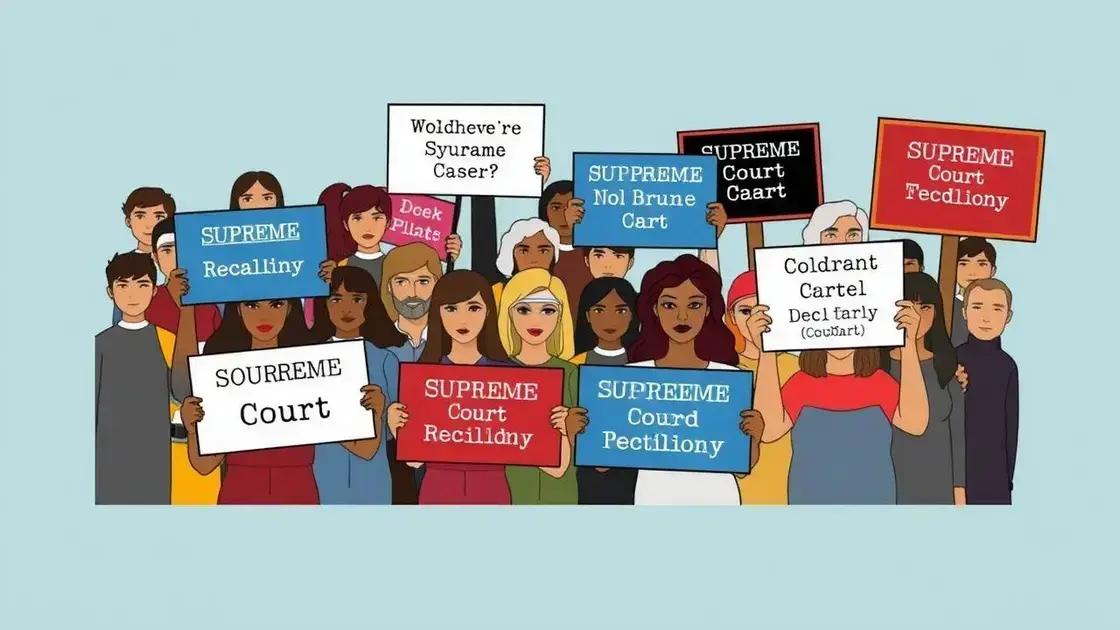
Public opinion plays a significant role in shaping the decisions of the Supreme Court. Justices are aware of how societal attitudes influence legal interpretations and outcomes.
The Relationship Between Public Sentiment and Court Decisions
While the Supreme Court operates independently, public opinion can sway its rulings. Justices are appointed for life, yet they recognize the importance of aligning their decisions with evolving societal values. This awareness can be observed during crucial cases that pertain to social issues.
- Historical Impact: Landmark cases often reflect public sentiment, such as Brown v. Board of Education, which addressed racial segregation.
- Shifts in Attitudes: As public opinion shifts on issues like same-sex marriage, the Court may follow suit, as shown in Obergefell v. Hodges.
- Influence of Advocacy Groups: Organizations and movements work to raise awareness and shape public opinion, influencing how justices view particular cases.
Justices read briefs, listen to arguments, and remain mindful of societal trends. They might even reference public opinion in their writings. When the Court rules in a way that reflects prevailing public sentiment, it can enhance the Court’s legitimacy and support.
The Role of Media in Shaping Opinion
The media plays a vital part in communicating legal cases and their implications, influencing how the public perceives them. Coverage of Supreme Court decisions can generate discussions, mobilize protests, or support advocacy, creating a ripple effect in public opinion.
Additionally, as social media platforms rise, public discourse around Supreme Court rulings has intensified, allowing immediate reactions and broader participation in legal debates. This instant access to information means justices might feel the pressure of public opinion more than ever.
Public opinion’s influence on the Supreme Court emphasizes the dynamic nature of law. It showcases how the judiciary, while independent, is still a part of a larger social context, reflecting the values and beliefs of the citizenry.
The Supreme Court plays a vital role in shaping the laws and rights that govern our society. Each decision reflects the Court’s response to contemporary issues and public opinion. As we see, public sentiment can influence legal outcomes, highlighting the relationship between democracy and the judiciary. The process of cases reaching the Supreme Court ensures that only significant legal questions are considered. This intricate system maintains a balance between state and federal laws, thereby reinforcing the rule of law across the nation.
FAQ – Frequently Asked Questions about Supreme Court Decisions
How does public opinion influence Supreme Court rulings?
Public opinion can sway the justices as they are aware of societal values, which may lead to rulings that reflect contemporary attitudes.
What is the process for a case to reach the Supreme Court?
A case must first be accepted through a petition for certiorari, where justices decide based on the importance and implications of the legal issues.
Why are some Supreme Court cases more significant than others?
Significant cases address major constitutional questions or resolve conflicts in lower courts, impacting widespread legal principles.
What role do advocacy groups play in shaping public opinion?
Advocacy groups raise awareness on specific issues, mobilizing public opinion and influencing how justices may perceive cases related to those issues.




